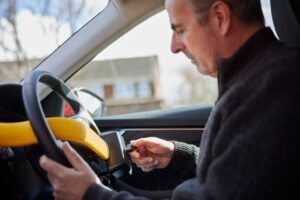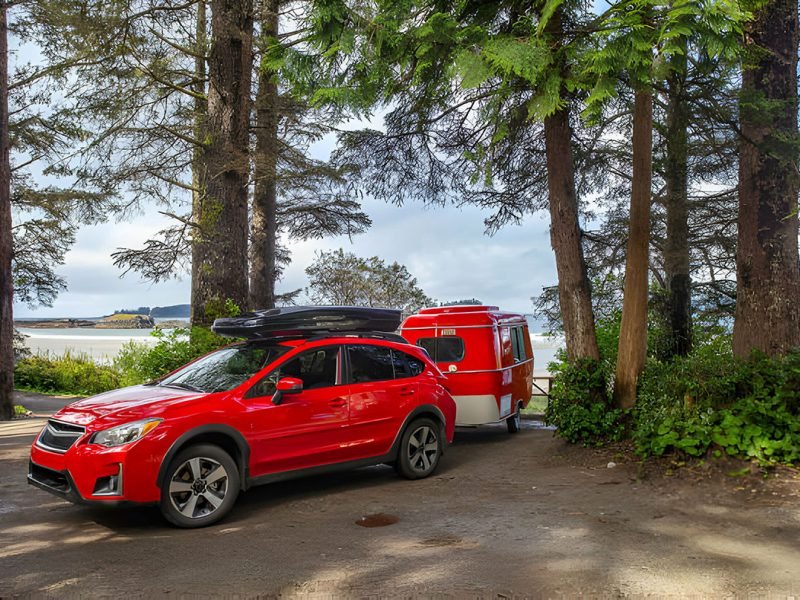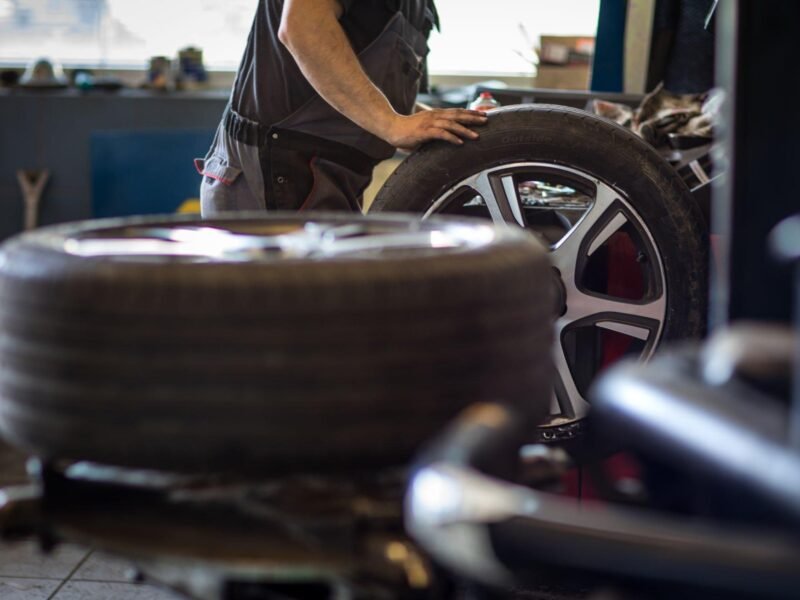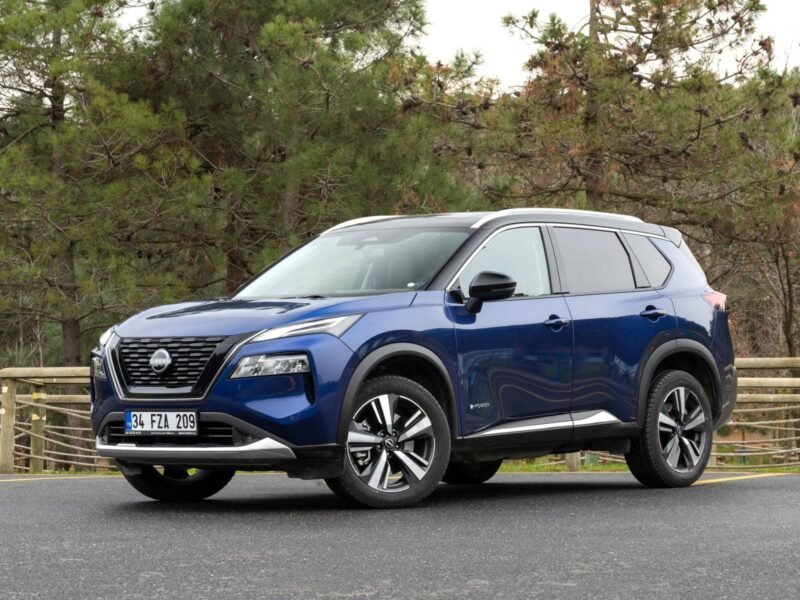Purchasing a used car can be a remarkable way to save money while still getting a trustworthy means of transport. Yet, unlike buying a new car, buying a used car demands a bit more research and carefulness.
Without useful preparation and inspection, you may end up with a car that has hidden issues that could be costly to repair. That’s why having a comprehensive used car checklist is essential to help ensure that you make a smart purchase.
In this expert’s guide, we’ll provide you with a foolproof used car checklist to help you navigate the process with confidence.
What to look for when buying a used car
A used car purchase might be daunting. Nobody dreams of making the misstep of buying a “lemon” car, which is full of defects that aren’t immediately noticeable.
Buying a used car is a financial way to own a vehicle, but it can be an artful technique.
Thank goodness, there are lots of mechanisms and information available to counsel you in making an informed purchase. A used car checklist is a useful tool to assure that you have looked at every part of the vehicle you are regarding to buy.
Do general research on Vehicle
Create a list of the car models you want to look at earlier visit the dealer and start the car buying procedure. Once you have your list, investigate each vehicle to learn about frequent issues, potential expenses of repairs, and pricing ranges as they age.
With your homework in hand, you’ll enter the market prepared to negotiate and with a keen eye for each automobile model’s weak spots.
Set your Budget
If you plan to purchase a car with a loan, you must put down at least 20% of the cost because it will lessen your monthly basic income.
Because used cars frequently require more repairs than a newer car would, you might want to think about paying even more upfront. Researching car insurance quotes and how much gas the vehicle will consume is a good idea in addition to looking into repair costs.
You must also choose between buying a used or certified pre-owned (CPO) vehicle. A certified pre-owned car is a car that is normally under 5 years old and has smaller than 60,000 miles on it. The fact that CPO vehicles are pre-selected, inspected, and offered a range of extra services, such as extended warranties, can give you peace of mind. One of the main drawbacks of purchasing a CPO vehicle is that it will cost more than a used vehicle due to the inspections.
Mileage and added features can affect a car’s value, so cars of the same model and year may have different price tags. Kelley Blue Book’s pricing tool can help you get a price quote.
Have questions for the seller
Get as much data about the used car as you can before reaching a dealer or a private seller. Don’t be afraid to ask questions; dealers expect that their customers will.
What to inquire about when buying a used car:
- What’s driving the sale of the car?
- How many people have owned it before?
- What is the car’s condition, please?
- What is the mileage on the odometer?
- Was the car involved in any collisions?
- Has the car had any electrical damage?
- Has this model had any recalls?
- When did this vehicle last go through the inspection?
Conduct your own car inspection
Before using it, make sure to give it a comprehensive review and look for anything that can later induce you problems.
This includes inspecting the outside for evidence of bodywork repairs, corrosion, rust, and tire form, as well as the interior for any odd odors, wear on the upholstery, and control functionality.
To make foolproof that everything is in working order, don’t ignore to check under the hood. If at all feasible, bring the vehicle to a reliable mechanic for a more thorough examination.
Vehicle’s History
Another thing to think about when buying a used car is the vehicle’s record. By obtaining a Carfax report, you can see if the car has been involved in any mishaps or had any major repairs done. It’s also important to check the mileage and how many previous owners the car has had.
This will give you an opinion of how well the car has been maintained and what to desire in terms of wear and tear.
Condition of the car
The meaningful thing to look for is the condition of the car’s body and internal. Check for any indications of rust, body damage, or wear and tear. Inspect the seats, dashboard, and carpets, and make sure everything is in good condition.
Check that all the windows and doors open and close smoothly and that the locks work correctly.
Negotiate price
Start with a reasonable but low offer because car sellers nearly always make a greater counteroffer. To provide yourself with reliable facts on which to base your negotiation, look up the current market worth in a pricing guide like Kelly Blue Book.
Keep in mind to adhere to your pricing range and budget. You’re coming close to a decent deal if the salesperson offers a counteroffer that is comparable to the value of the present market.
There is always the possibility to back out of the agreement if the final asking cost is too high. If you want to pay cash, a private seller of old cars can be a possibility.
A reasonable agreement might be brought by haggling over the cost of a used car with a private seller.
Mechanical condition
The most important thing to consider is the car’s mechanical condition. Open the hood and look for signs of leaks or damage to the engine, belts, hoses, and wires.
Check the oil and coolant statuses, and make foolproof there are no odd noises coming from the engine. Take the car for a trial drive and pay attention to how it regulates, brakes, and accelerates.
Use your instincts
When purchasing a secondhand car, a little common sense can go a long way. Suppose the merchant looks reliable. Be aware of methods used to conceal defects, such as tampering with odometers and applying air fresheners to cover up odd odors.
Don’t make an impulse purchase just because you’ve finally discovered a car that appears decent on the outside, and resist giving in to high-pressure sales techniques. Anything that looks too good to be true likely is.
Car’s paperwork
Lastly, check the car’s paperwork, including the title, registration, and insurance procedures. Assure that everything is in order and that the seller has supplied you with all the essential documents. By following a used car checklist like this, you can have peace of sense knowing that you have entirely checked the vehicle.
When buying a used car, it’s essential to conduct a thorough inspection to avoid any unpleasant surprises down the road.
Using a used car checklist can benefit you make an informed finding when buying a used car. Remember to check the car’s history, body and interior condition, mechanical situation, and paperwork. With these steps, you can discover a trustworthy and affordable used car that fits your needs and budget.
3 hidden things to check before buying a used car
A pre-owned automobile could appear fantastic from the outside. You might not be able to detect any serious internal problems even during the test drive.
Here are the top 3 specialties to look for when buying a secondhand car in order to find out the real details and situation of the vehicle.
1: Identify if the car is stolen
Car theft occurs more repeatedly than you may think. Despite improved efforts by law enforcement and anti-theft initiatives over the years, thieves continue to come up with innovative ways to steal and sell cars. In fact, according to www.iii.org, there were 873,080 stolen cars in the United States in 2020 compared to 799,644 in 2019.
Further, relying on your country and state, you can be subject to extra-legal results if you buy a stolen car. You’ll probably lose both the automobile and your money if you unknowingly buy a stolen car. It is essential to do an inspection and determine if you are purchasing a stolen automobile or not because if you acquire a stolen car with knowledge, you could possibly be arrested.
2: Detect illegal mileage manipulation
The next stage is to verify whether the used car has been improperly altered to fetch a higher price once you have made sure you are not purchasing a stolen vehicle.
One of the most popular methods for overcharging used automobile buyers is odometer fraud. It is the manipulation of the car’s mileage in an effort to reduce or reverse the displayed number of miles. Every year, some 450,000 used cars are sold with a fictitious mileage count in the U.S. alone.
Low mileage indicates that the car has not been driven very much because mileage is one of the markers to identify a vehicle’s conditions. Since these low-mileage vehicles should last longer, their price will increase when they are put on the market.
The price of a used car might rise by up to $5,000 if automotive scammers are successful in changing the mileage. Therefore, it might be quite cost-effective for you to check for odometer manipulation on the secondhand car you are interested in buying.
Fortunately, odometer fraud may be recognized as vehicles grow more technologically capable. There are countless methods for detecting this, some of which are more tricky or costly than others.
3: Uncover hidden faults and issues
Let’s move on to checking a used car’s genuine health status now that you have looked for fraud and illegal manipulation. Many consumers choose a used automobile based on how it drives and how it looks when making a purchase. A secondhand car could appear to be in excellent condition from the outside, the inside, and even during a test drive.
However, since they are invisible (if the engine starts as it should), any internal automotive issues are simple to conceal. We advise you to conduct your own “inspection” by having a fast health check with Carly in order to buy a nice used automobile and obtain a fair value.
In this manner, you can determine whether potential problems are present.
If there are any defects, codes, or issues that could cost you hundreds of dollars to fix, a health check will immediately let you know. Carly’s health check not only reveals the troubles the used car possesses but also their severity.
Consequently, if you are unable to afford ongoing maintenance costs, this is the easiest approach to deciding whether to purchase a used automobile or not.
What is the finest time to buy a used car?
The useful and best time to purchase a secondhand car is generally at the dying of the year or at the start of the fresh year. During these times, car dealers are looking to clear out their inventory to make room for newer models, and they may offer better deals and discounts to entice buyers.
Also, purchasing a used car during this time also lets you take benefit of any year-end sales tax assumptions.
It is significant to think of, yet, that even when purchasing a used car during the best time, you should always pursue a used car checklist. This will enable you to assure that the car you are considering is in good condition and that you are not overlooking any possible situations.
Some of the items on the guide of used car checklist include checking the car’s history, inspecting the car’s body and interior, checking the mechanical condition of the car, and reviewing the car’s paperwork.
Do you need insurance to buy a used car?
No, you do not require insurance to purchase a used car. Yet, you will require insurance in order to lawfully drive the car once you have bought it and plan on taking it on public routes.
In most suits, you will be instructed to show proof of insurance to the DMV before you can register the car and get license plates. It is significant to recall that purchasing a used car refers to more than just the purchase price, as you will require to budget for ongoing expenses such as insurance, maintenance, and repairs.
It is also a useful idea to shop around for auto insurance quotes before you purchase a used car, so you can have a notion of what your insurance charges will be for that certain car.
Conclusion
In conclusion, buying a used car can be a smart financial decision if done right. It is significant to remember to look for indications of wear and tear, ask for the vehicle’s history information, test drive the car, and have it checked by a mechanic before making your purchase.
Having a used car checklist handy can ensure you don’t miss anything vital during the buying process. Besides, timing can play a fundamental role in getting a reasonable deal on a used car.
Typically, the end of the year or on holidays are great times to buy since dealerships are looking to meet their sales quotas. It’s also worth considering insurance options before purchasing as some policies may offer protection for unforeseen issues with your new set of wheels.
By following these tips and using your best judgment, you too can navigate the used car market like an expert.
FAQs
What is the article about?
The article is about a foolproof checklist for buying a used car.
Why is a checklist necessary for buying a used car?
Buying a used car can be risky, so having a checklist helps ensure that you don’t overlook any important details that could lead to problems later on.
What are some items of the checklist?
Some of the items on the checklist contain checking the car history report, checking the exterior and interior of the car, handling it for a test drive, and having it checked by a mechanic.
How can I obtain a vehicle history report?
You can obtain a vehicle history report from services like Carfax or Auto Check by entering the car’s VIN number.
Why is a test drive important?
A test drive lets you to get a sense for how the car handles and any possible problems that may emerge, such as strange noises or steering issues.
What should I look for during the exterior inspection?
During the exterior checking, you should look for indications of crack, such as dents, scratches, or rust.
What should I look for during the interior inspection?
During the interior checking, you should check the situation of the seats, dashboard, and any electronics, as well as look for any indications of leaks or strange smells.
Do I require to have the car checked by a mechanic?
It’s highly recommended to have the car inspected by a mechanic to catch any potential issues that may not be visible during a simple inspection.













